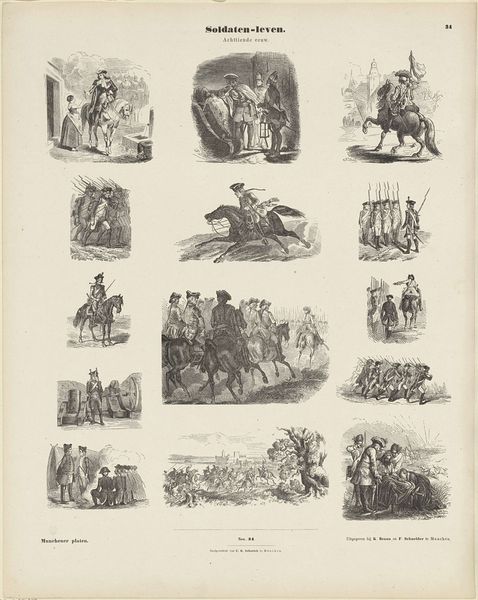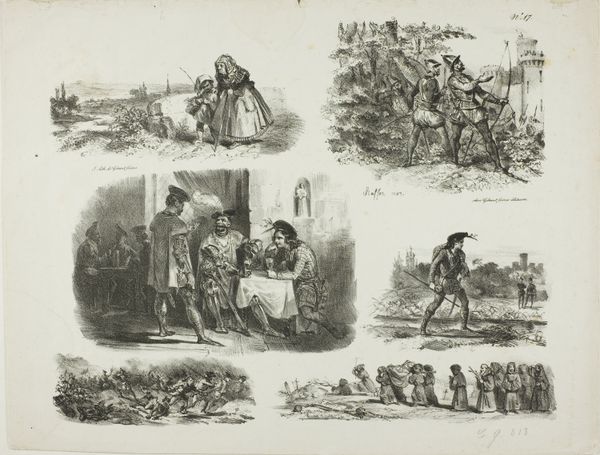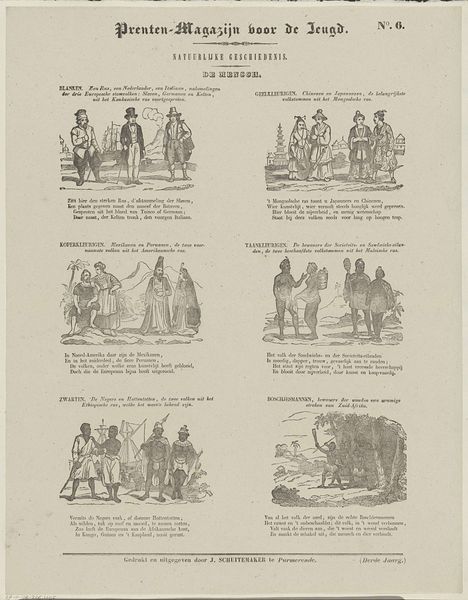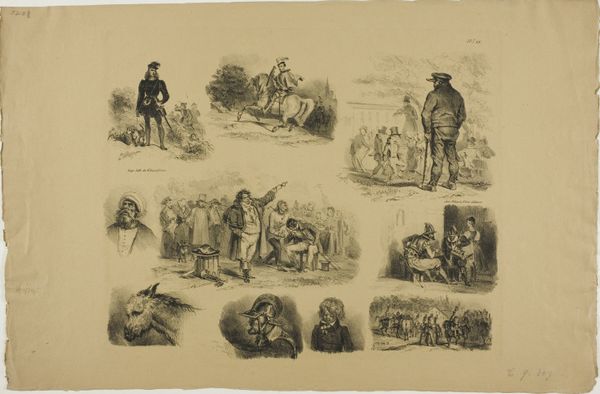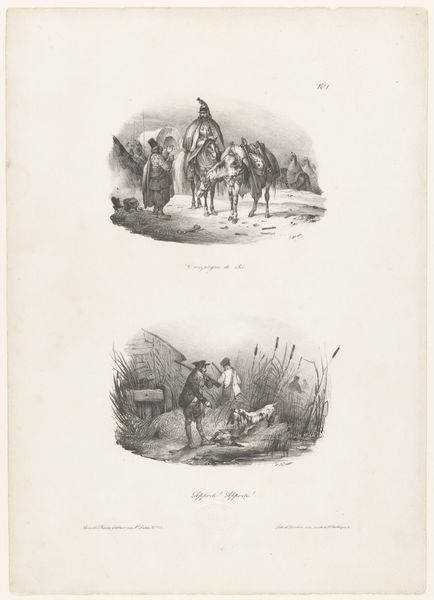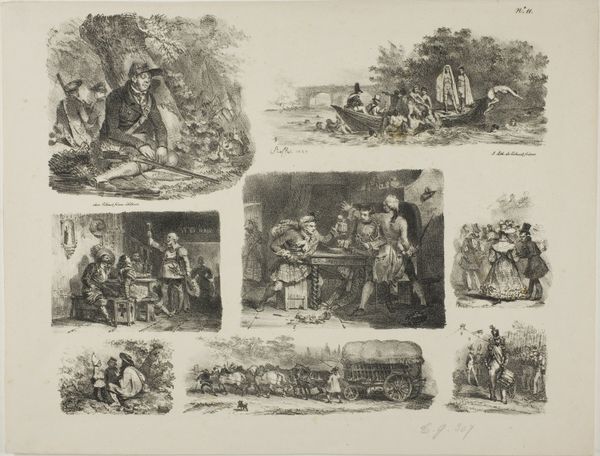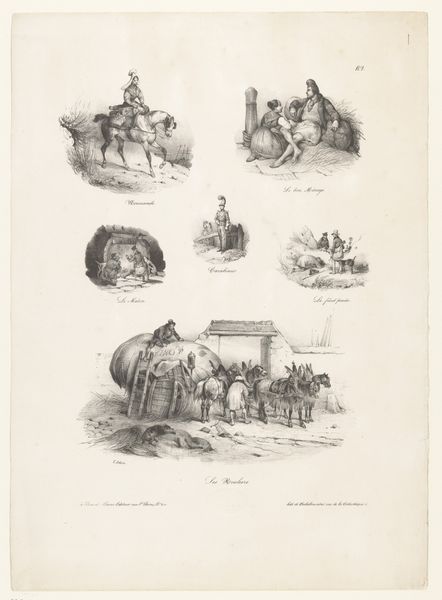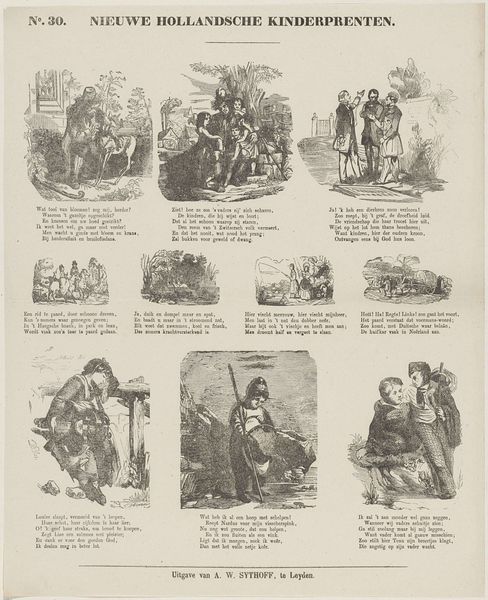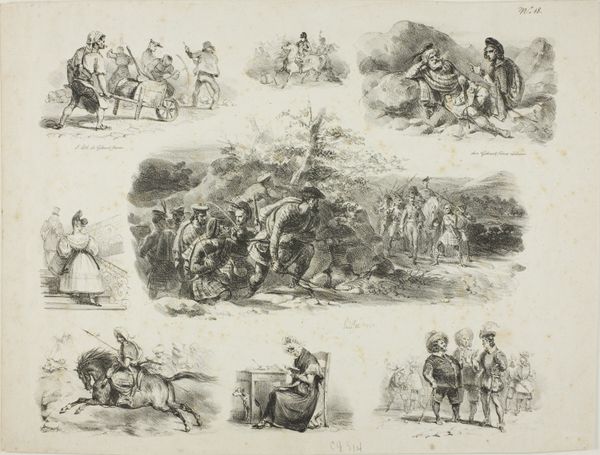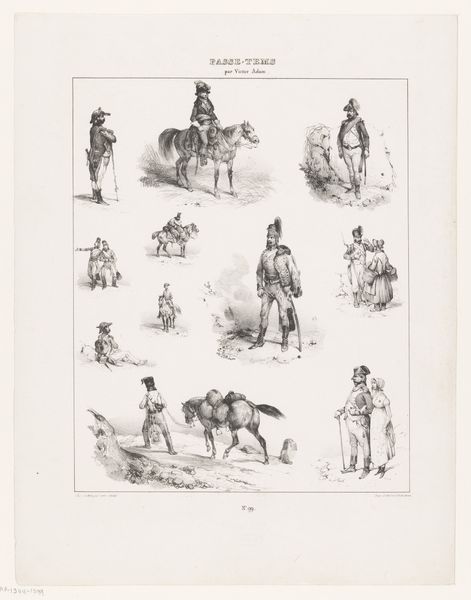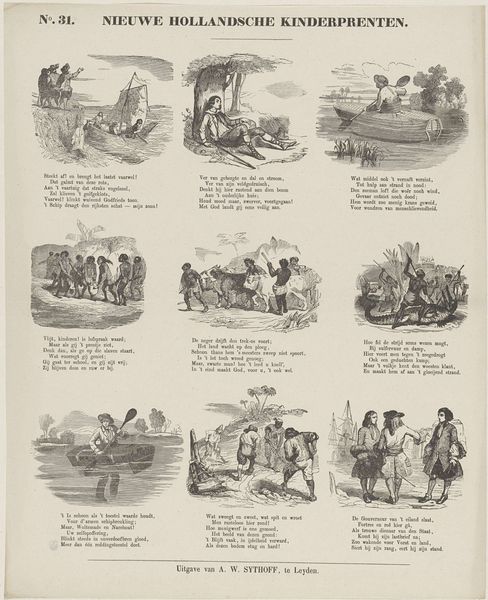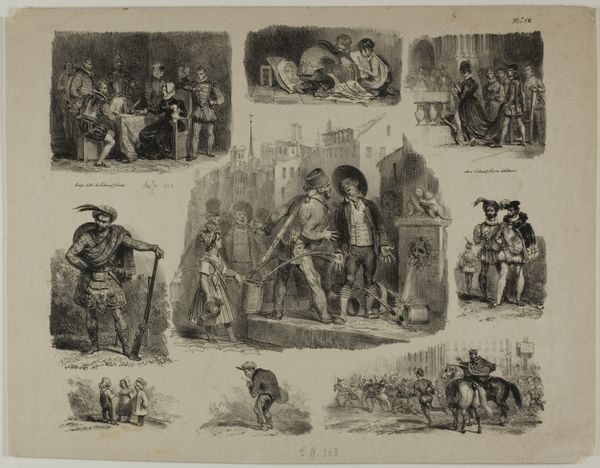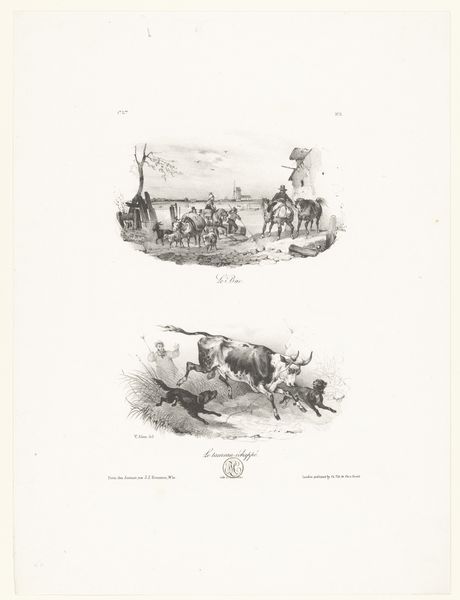
Dimensions: height 441 mm, width 350 mm
Copyright: Rijks Museum: Open Domain
Curator: This engraving, titled "Soldaten-leven / Negentiende eeuw," or "Soldier's Life / Nineteenth Century," offers glimpses into military existence from around 1843 to 1920, attributed to J.J. Camphausen. It's striking, isn't it? What’s your first take? Editor: Immediate impression? A melancholic storyboard. Little vignettes hinting at grand, sweeping narratives of conflict. It feels more like a shadow play than a celebration of martial prowess. Curator: I think that reading of it as a "shadow play" is very astute, actually. Notice how the artist arranges scenes depicting moments of active battle alongside quiet, contemplative moments. Editor: Absolutely, look at the scene with Napoleon – such isolation! Even the ones depicting apparent victory or readiness, there's a heavy sense of somber anticipation. Almost as though Camphausen is inviting us to contemplate the personal cost of those historical moments. Curator: Precisely! It is genre painting with an historical aspect rooted in Romanticism. The juxtaposition hints at something deeper—the cultural memory and the soldier as a perpetual figure within the framework of the grand scope of history itself. Note too how his stance is repeated by some of the other individual figures throughout. Editor: A stoic figure, carrying the weight. The endless cycle. This composite feels timeless despite its explicit timeframe, doesn’t it? I wonder if Camphausen intentionally set out to create this effect by compressing different aspects of war onto a single page? It is like time is folded in. Curator: Exactly! This piece isn’t simply about battles; it's about soldiering and it invites reflection upon the individual caught within larger political narratives, especially for those living in Europe in that era. The personal is small but not minimized as the historical frame is suggested through a sense of shared memory. Editor: That’s well said, really. It makes you question not only what’s being depicted, but how the individual soldiers themselves might feel in these various scenes. Curator: Indeed, a powerful convergence of form and emotion—visual poetry in grayscale! I feel as though the frame enhances this feeling that history might be more cyclical than linear. Editor: Absolutely, leaving you to consider where, or even when, the viewer fits within these reflections! Thank you for bringing such illuminating contextual and symbolic readings to this beautiful, haunting work.
Comments
No comments
Be the first to comment and join the conversation on the ultimate creative platform.
